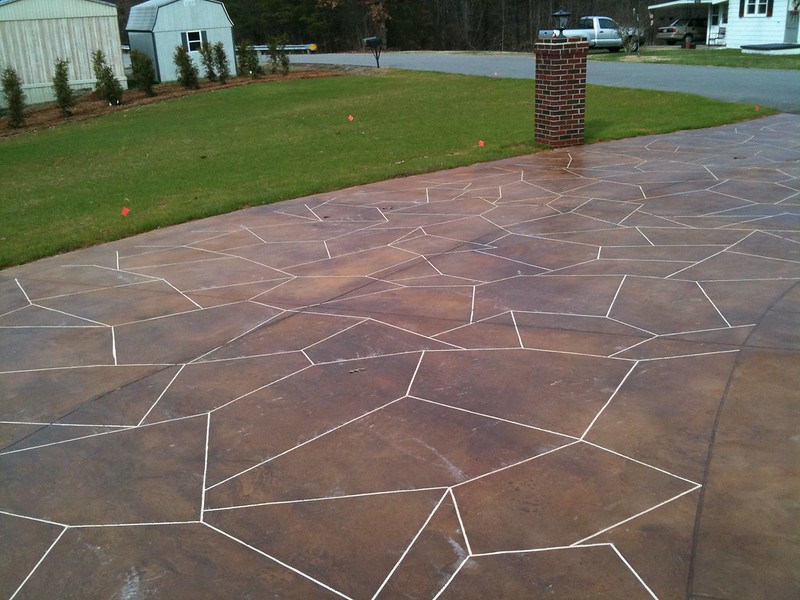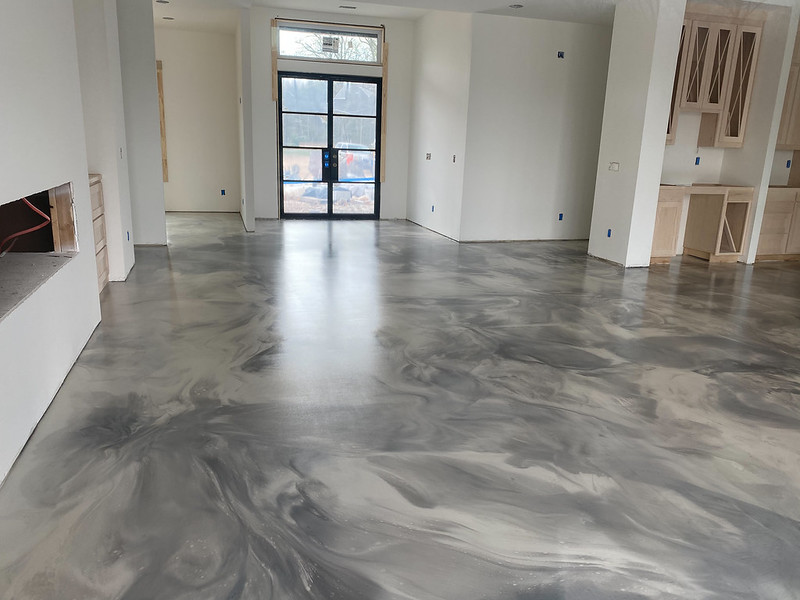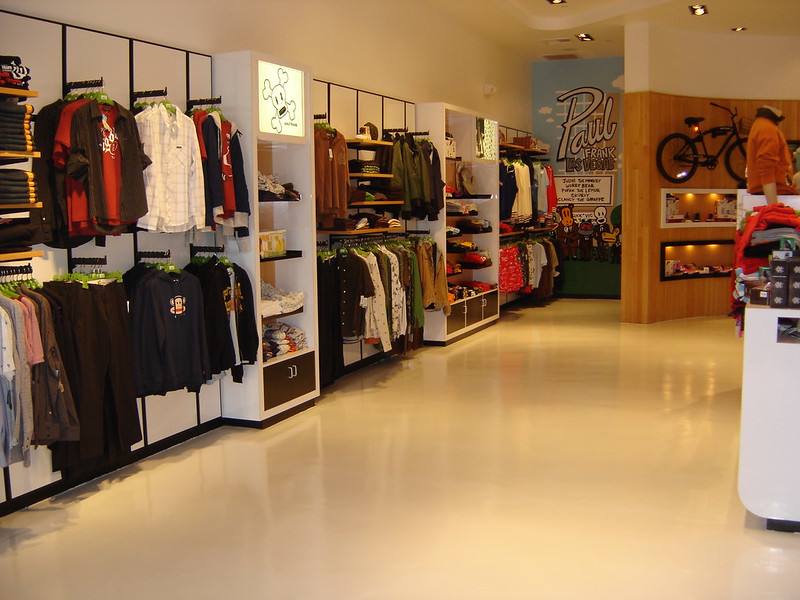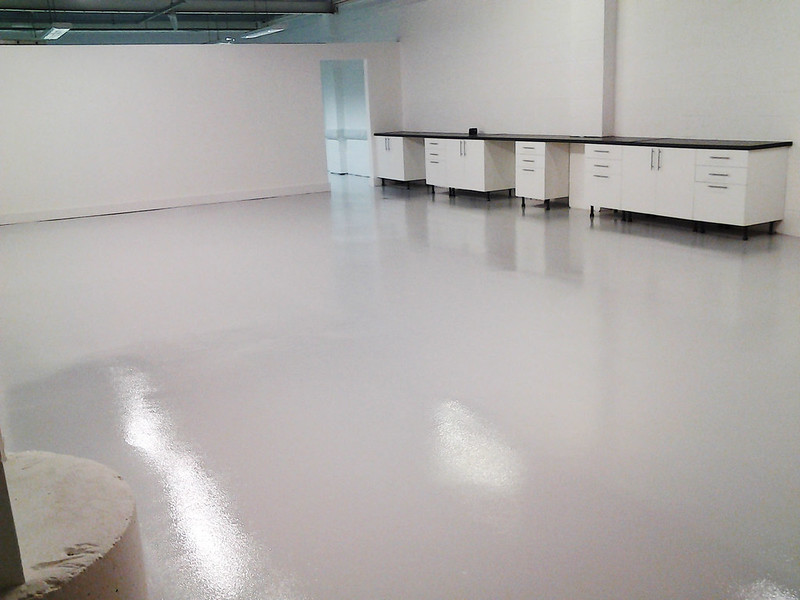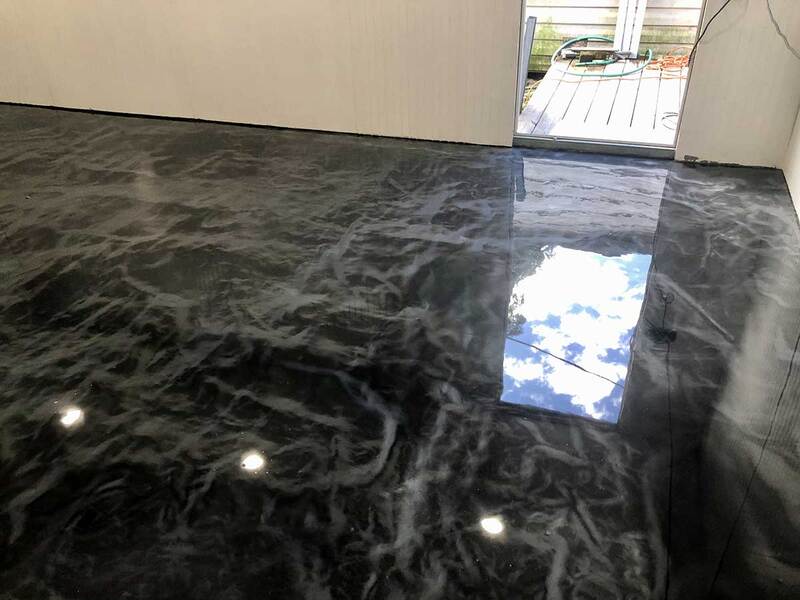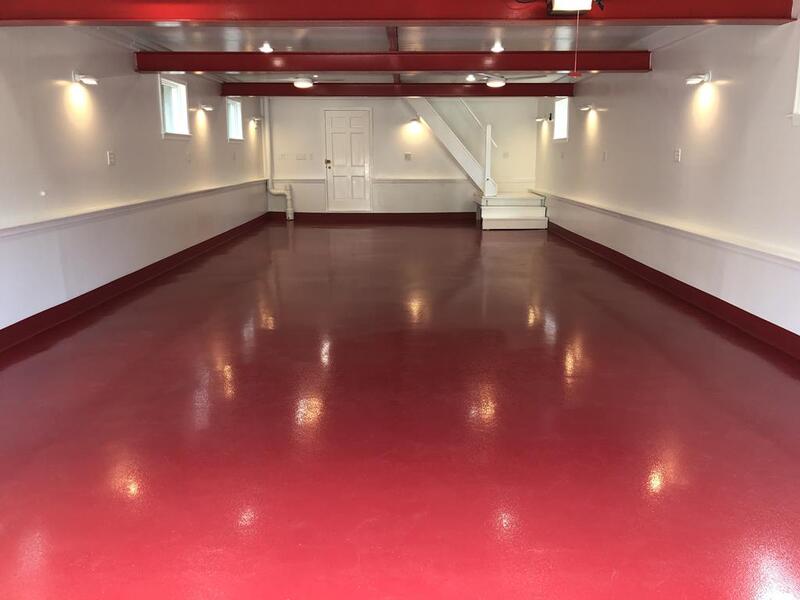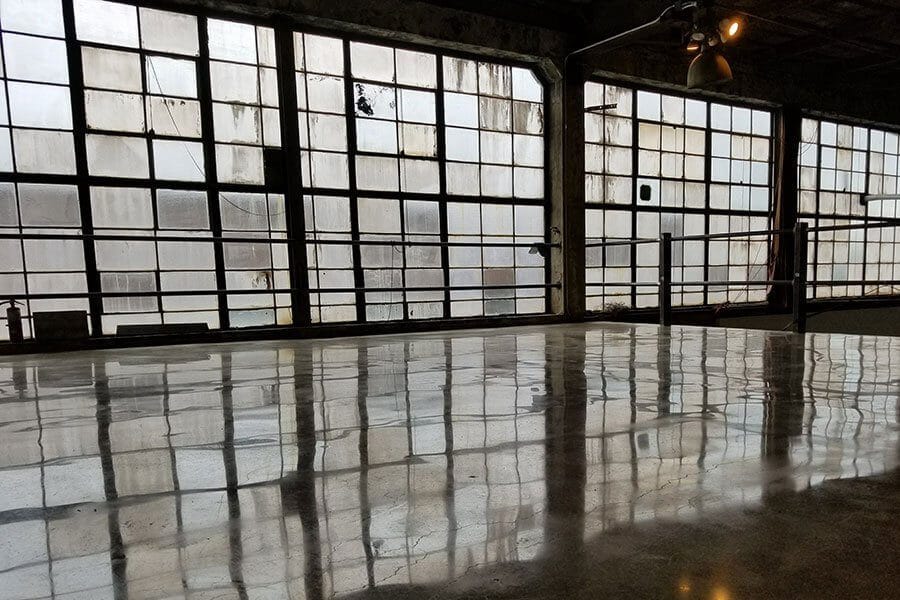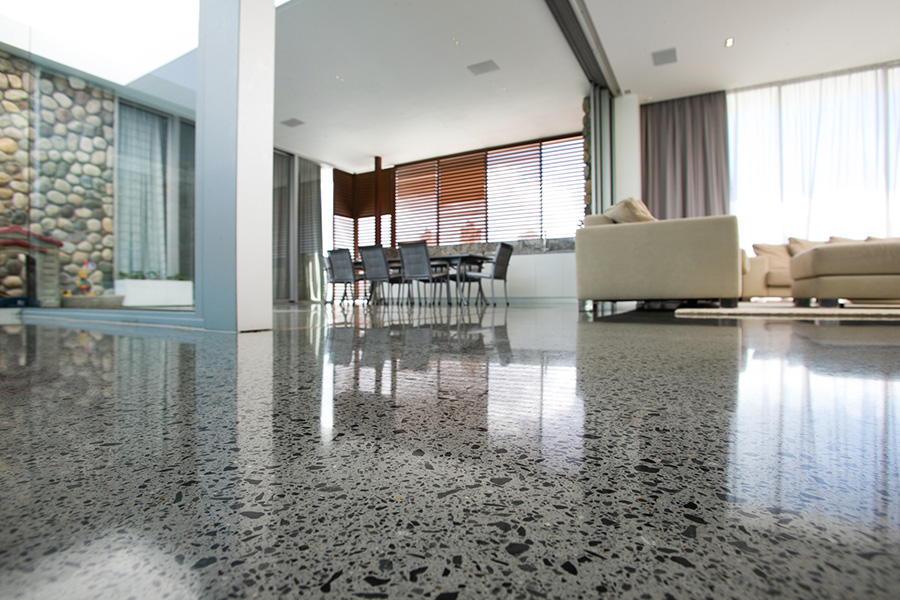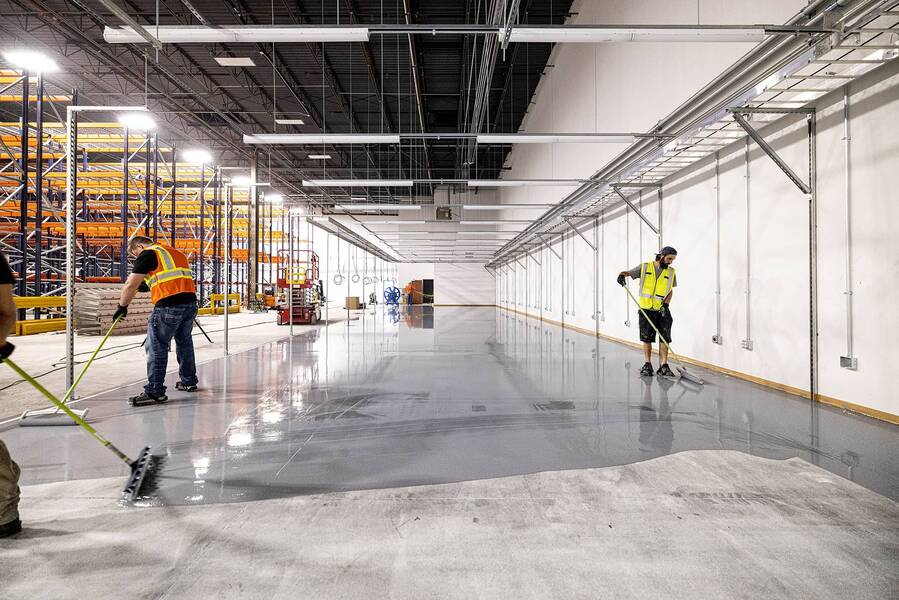You’ve always believed that the floor beneath your feet can be a canvas for artistic expression. And with stained concrete and concrete overlays, that belief becomes a stunning reality. This article will guide you through the process of choosing the right stain, applying concrete overlays, and enhancing the aesthetics with stencils and patterns. We’ll also provide maintenance tips and explore unique design ideas to ensure your stained concrete floors remain a masterpiece for years to come. Get ready to unleash your creativity and create artistry underfoot.
Choosing the Right Stain for Your Concrete Floors
You should consider using a high-quality stain for your concrete floors. Staining your concrete floors can transform them into beautiful works of art, adding character and depth to your space. When choosing a stain for your concrete floors, it is important to consider the type of stain that will best suit your needs. There are two main types of stains: acid-based stains and water-based stains.
Acid-based stains penetrate the concrete surface, reacting with the minerals in the concrete to create unique, variegated colors. These stains produce rich, earthy tones and provide a more natural, mottled look. They are highly durable and long-lasting, making them an excellent choice for high-traffic areas. Acid-based stains also offer the advantage of being resistant to fading and UV damage, ensuring that your floors will retain their vibrant colors for years to come.
On the other hand, water-based stains are more versatile and easier to work with. They come in a wide variety of colors and can be mixed to create custom shades. Water-based stains are ideal for achieving vibrant, uniform colors on your concrete floors. They are also environmentally friendly, as they emit fewer harmful fumes than acid-based stains. Additionally, water-based stains dry quickly, allowing for faster installation and minimal downtime.
No matter which type of stain you choose, it is essential to select a high-quality product. High-quality stains provide better coverage, deeper color penetration, and enhanced durability. They are specifically formulated for concrete floors and offer superior adhesion and resistance to wear and tear.
Step-by-Step Guide to Applying Concrete Overlays
To ensure a smooth and successful application, carefully follow these step-by-step instructions for applying concrete overlays.
Prepare the Surface: Begin by thoroughly cleaning the existing concrete surface. Remove any dirt, grease, or oil using a concrete cleaner and degreaser. Rinse the surface with water and allow it to dry completely before proceeding.
Apply Bonding Agent: Apply a thin coat of bonding agent to the prepared surface using a paint roller or sprayer. This will create a strong bond between the existing concrete and the overlay material.
Mix the Overlay: Follow the manufacturer’s instructions to mix the concrete overlay material. Use a mixing paddle and a drill to ensure a smooth and consistent mixture. Be sure to wear appropriate safety gear, such as gloves and a mask, during this process.
Apply the Overlay: Pour the mixed overlay material onto the prepared surface. Use a trowel to spread the material evenly, working in small sections at a time. Smooth out any imperfections and ensure a uniform thickness of the overlay.
Add Texture: If desired, use a texture roller or stamp to create patterns or textures on the surface of the overlay. This can add depth and visual interest to the finished product.
Cure and Seal: Allow the overlay to cure for the recommended amount of time, typically 24 to 48 hours. Once cured, apply a concrete sealer to protect the surface and enhance its appearance. Follow the manufacturer’s instructions for application and drying times.
Enhancing the Aesthetics of Your Concrete With Stencils and Patterns
To add creativity and flair to your concrete surfaces, consider using stencils and patterns for an enhanced aesthetic appeal. By incorporating stencils and patterns into your concrete design, you can transform plain and monotonous surfaces into visually stunning works of art. Here are some reasons why utilizing stencils and patterns can elevate the aesthetics of your concrete:
Versatility: Stencils and patterns offer endless possibilities for customization. Whether you prefer geometric shapes, intricate designs, or nature-inspired motifs, there is a stencil or pattern that can bring your vision to life. You can choose from a wide range of pre-made stencils or create your own unique design.
Texture and Depth: Stencils and patterns add texture and depth to your concrete surfaces. By applying different colors and layers, you can create a three-dimensional effect that adds visual interest and dimensionality to your concrete. This can make your concrete appear more dynamic and captivating.
Personalization: Stencils and patterns allow you to personalize your concrete surfaces. You can incorporate meaningful symbols, logos, or even your initials into the design. This personal touch can make your concrete space feel more unique and special.
Cost-effective: Stencils and patterns offer a cost-effective way to enhance the aesthetics of your concrete. Instead of investing in expensive materials or labor-intensive techniques, stencils and patterns provide a budget-friendly alternative that still delivers impressive results.
Ease of Application: Applying stencils and patterns to your concrete surfaces is a relatively simple process. With the right tools and techniques, you can achieve professional-looking results without requiring extensive training or experience.
Incorporating stencils and patterns into your concrete design can elevate its aesthetic appeal, adding character, texture, and personalization. Whether you want to create a bold statement or a subtle accent, stencils and patterns offer a versatile and cost-effective solution for enhancing your concrete surfaces. Let your creativity shine and transform your concrete into a true work of art.
Maintenance Tips to Keep Your Stained Concrete Floors Looking Beautiful
Keep your stained concrete floors looking beautiful with these maintenance tips. Stained concrete floors can add a touch of elegance and sophistication to any space. However, to ensure that they maintain their beauty and longevity, it is important to follow some maintenance guidelines. With a little bit of care and attention, you can keep your stained concrete floors looking as good as new.
First and foremost, regular cleaning is essential to maintain the beauty of your stained concrete floors. Sweep or vacuum the floor regularly to remove dirt and debris, as these can scratch the surface over time. Avoid using abrasive cleaning tools or chemicals that can damage the stain. Instead, use a mild, pH-neutral cleaner and a soft mop or cloth to gently clean the surface.
In addition to regular cleaning, it is important to protect your stained concrete floors from potential damage. Place mats or rugs at entryways to prevent dirt and moisture from being tracked onto the floor. Avoid dragging heavy furniture or sharp objects across the surface, as these can cause scratches or gouges. Consider using furniture pads or coasters to protect the floor from furniture legs.
To maintain the shine and luster of your stained concrete floors, it is recommended to apply a sealant every few years. This will help protect the stain from fading or wearing away, and also make the floor easier to clean and maintain. Consult with a professional to determine the best type of sealant for your specific stained concrete floor.
Lastly, be mindful of spills and stains. Clean up any spills immediately to prevent them from seeping into the concrete and causing permanent stains. Avoid using harsh chemicals or abrasive cleaners on stains, as these can damage the stain. Instead, try using a mild cleaner or a stain-specific product recommended by the stain manufacturer.
Exploring Unique Design Ideas for Concrete Overlays
Get creative and think outside the box when it comes to designing your concrete overlays, as they can be an opportunity to showcase your unique style and personality. Concrete overlays offer a versatile canvas for artistic expression, allowing you to create a wide range of stunning designs. Here are some unique design ideas to inspire you:
Geometric Patterns: Play with intricate geometric designs to add a modern and sophisticated touch to your concrete overlays. From chevron and herringbone patterns to bold stripes and tessellations, the possibilities are endless. These patterns can be achieved using different techniques such as stamping, stenciling, or even hand-painting.
Nature-Inspired Motifs: Bring the beauty of nature indoors with concrete overlays that feature nature-inspired motifs. Consider incorporating elements like leaves, flowers, or pebbles into your design to create a serene and organic ambiance in your space. These motifs can be achieved through techniques like engraving, acid staining, or using custom-made stencils.
Embedded Objects: Take your design to the next level by embedding objects into your concrete overlays. This can include anything from seashells and glass beads to coins and mosaic tiles. The embedded objects not only add visual interest but also provide a unique tactile experience.
Custom Graphics: Concrete overlays can be transformed into personalized works of art by incorporating custom graphics. Whether it’s your favorite quote, a family crest, or a company logo, these graphics can be added using techniques like screen printing or digital imaging. This allows you to create a truly one-of-a-kind design that reflects your individuality.
Colorful Accents: Don’t shy away from adding pops of color to your concrete overlays. Consider using vibrant pigments or acid stains to create eye-catching accents that highlight specific areas or elements of your design. Whether it’s a bold border or a subtle gradient, color can add depth and dimension to your concrete overlays.
Key Takeaways
- Stained concrete floors offer a natural, mottled look and are durable.
- Concrete overlays can be applied to enhance the aesthetics of existing surfaces.
- Stencils and patterns can be used to customize concrete surfaces with endless possibilities.
- Regular maintenance, such as sweeping and applying sealant, is necessary for stained concrete floors to maintain their elegance and durability.

